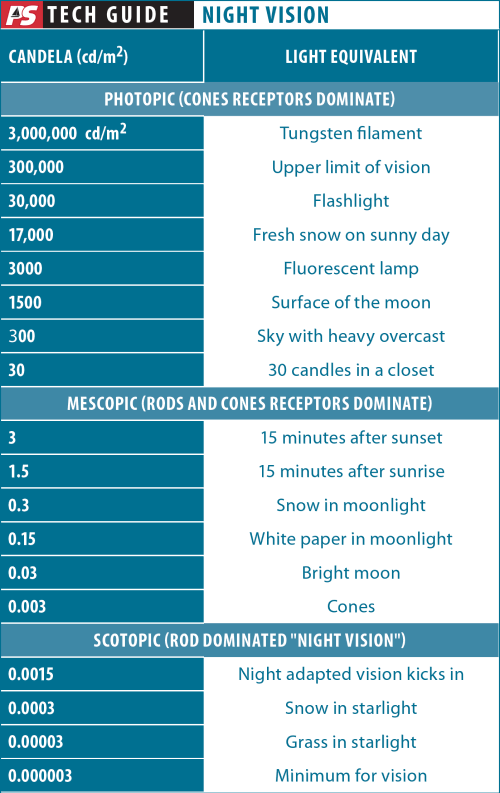Military research is based on young service members. The average sailor, based on our reader demographic, is about 57. Myopia and wearing glasses further impairs night vision.
The military spec says 0.3-3.5 cd/m2 is all the light you need to read a chart, but as you age, the minimal amount of light required increases significantly. A person with good night vision requires no more than 15 cd/m2 to see, but as you age this number increases. An person with average to above average night vision is likely to need 15-25 cd/m2.

The theory of using dim lights to protect the eye’s ability to adapt to darkness involves keeping light levels in the mescopic range. However, the amount of light required for older eyes to read is well into the photopic range, meaning every time a light is used to read a chart, your eyes will need a much longer time to recover. Small wonder we have become more dependent on radar and plotters. We can’t see beans.
The solution? Better light discipline. Clear the decks and cabin so that you don’t need light to move about below. Lay out any gear or snacks that will be needed. You should be able to find the head or grab your rain gear in pitch black conditions. Turn off instruments you don’t need and cover instruments you aren’t actively using.
Do you really need the compass and sounder full-time during an autopilot passage? Leave the radio on, but cover the display. Ask that crew members not wear unshaded headlamps; one flash in the eyes at short range and you can’t see right for 30 minutes.
If you must use cabin lights, reduce the number and block them from view on deck. Warn people before you use a bright light or open the companionway. Avoid alcohol and even worse, tobacco. Both degrade night vision. Wear sunglasses during the day; prolonged exposure to overly bright light reduces dark adaptation for 12-24 hours.
Multi-function displays (MFDs), chart plotters, and smart phones can usually be dimmed. Smart phones can be dimmed and set to red for night use. However, if you can read them, they are almost certainly far too bright to fully protect dark adapted vision and should be covered or turned off whenever it is not actually necessary to look at them.
You can read a chart under dim light, because this is only for a few minutes and your eyes will re-adapt in 10-15 minutes. But a display is in front of you constantly, subtly blinding you, without your noticing. Note that the MIL standard for instrument reading is just as dim as for chart reading, with either red or white permitted.





































